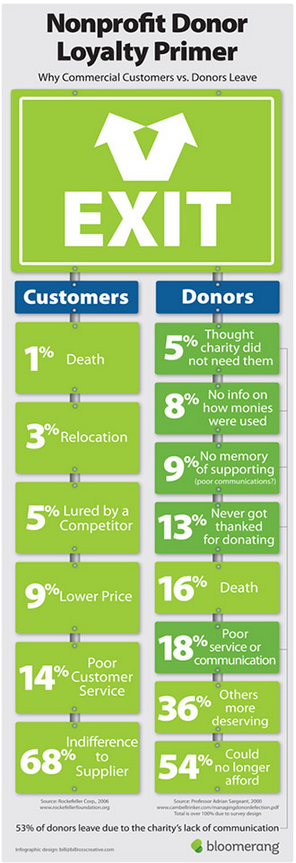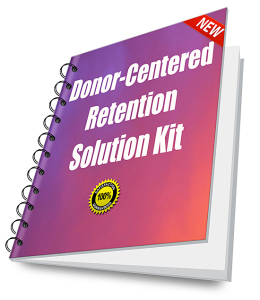Ever hear of “A.Word.A.Day” with Anu Garg? I hadn’t. Until a friend recently shared with me that day’s word. She said, “this one’s all about you!” The word?
Clairaudience.
It’s a perfect word for fundraisers, because it’s precisely what you must do – a skill you absolutely must have – if you’re to succeed with sustainable fundraising.
It means the ability to hear what is in people’s hearts and minds.
It’s a lot like clairvoyance, but it brings in the audience perception. It’s the ability to “hear” what is inaudible — by getting a read on what folks are thinking and feeling on the inside. Despite what they may reveal on the outside.
Guess who is good at this?
Donald Trump.
A recent article in Rolling Stone by Brian Stelter quotes contributing writer,Paul Slotaroff, who says that in his time with Trump he found ‘a guy with two extraordinary senses. One is something I call clairvoyance, the ability to read a market way before it is formed and get there first. The second is clairaudience, the ability to hear what is in people’s hearts and minds.’ Slotaroff described clairaudience this way:
‘There’s Donald, on the 26th floor of his massive office in the Trump Tower, and somehow he read and saw and heard into the hearts of disaffected underemployed white people in Coatesville, Pennsylvania, in, you know, West Virginia, in Ohio. And not only was he able to hear that seething rage, he was able to read it back to them, word for word, in ways that no Republican has ever done before.’”
Guess who else should be good at this?
You!
[BTW: This is in no way an endorsement of a particular individual. I simply find it useful to evaluate skills that have value in the world of philanthropy. All skills can be used for good or ill. I come from a place of love.]
Don’t you think it would be useful for development professionals to be able to:
- get inside people’s heads and hearts?
- stand in their shoes?
- show prospects and donors that you know them?
- channel empathy; using it to engage folks and reframe the conversation in a manner that honors their feelings rather than dismisses them?
Clairaudience is the very essence of donor-centered fundraising.
It’s what enables you to create a fundraising message that resonates with what your donor cares about and wants to do. When all is said and done, donors give to fulfill their own agenda, not yours. If you can figure out what that agenda is, then you can connect with them in a way that will matter.
It doesn’t mean you must abandon your own agenda or lose your own center.
It means you must move towards your true center by meeting in the middle. It’s why fundraising has been called a value-for-value exchange. And why politics is known for mutually beneficial back scratching.
But before all this exchanging and reciprocal scratching can take place, there must be some illuminating communication. Something that reassures all parties there are values to be shared.
Too often, we think only about content creation in terms of offering what we perceive as value.
- Let’s be sure our mission statement offers great value.
- Let’s be sure to tell meaningful stories that offer great value.
- Let’s be sure to demonstrate valuable outcomes.
- Let’s offer up lots of gratitude to show the donor how valued they are.
All these things are extremely important; don’t get me wrong. But they, alone, don’t raise your content marketing strategy to the level of “communication.” Because they ignore the donor perspective. What’s valuable to them? How do you truly know? [See “Why Nonprofit Content Marketing Should Help; Not Sell“].
Guessing is not much of a strategy.
The truth is that even the most awesome content will not begin a dialogue if it is simply broadcast outward. For “communication” to ensue you must touch emotions… elicit dialogue… tug on heartstrings… and stir actions.
True value includes offering a listening ear.
The better you listen, the better you can do what Penelope Burk exhorts nonprofits to do if they want to retain donors: “Show ‘em that you know ‘em.” [Check out “Show Me That You Know Me – 5 Things You Must Do to Sustain Donor Relationships].
If you want folks to pay attention to what you have to say, begin by paying attention to what they have to say. And welcome folks in. Don’t make it so difficult for them to get inside your door. You want them to feel like insiders, don’t you?
Are your lines of communication open?
The Business Dictionary defines communication thusly:
“Two-way process of reaching mutual understanding, in which participants not only exchange (encode-decode) information, news, ideas and feelings but also create and share meaning. In general, communication is a means of connecting people or places.”
Are your donor communications two-way? Take a look at the past five “communications” you’ve sent to your supporters (e.g., email; e-newsletter; appeal; thank you letter; tweet; Facebook post, etc.). Ask yourself about each one:
- Does this answer the “what’s in it for me?” (WIFM) question from my donor’s perspective?
- Does this treat my donor as a true participant by including a feedback opportunity to help me better understand my donors’ ideas and feelings?
- Does this make it easy for my donor to exchange information with me? With others?
- Does this do the job of connecting my supporters closer to (1) me; (2) the organization; (3) each other? How?
- Does this create a sense of a community with shared values? How, specifically?
If you answered “no” to one or more of these questions, it’s probably why you’re losing so many donors.
In fact, research shows the primary reasons why donors leave are closely connected to failed communication strategies:
- 53% of the reasons donors give for failing to renew their giving is because the organization failed to properly communicate in one way or another (Bloomerang, “Nonprofit Donor Loyalty Primer” Infographic via Dr. Adrian Sargent, “Managing Donor Defection”).
- 46% of donors leave for reasons tied to lack of meaningful info or to a feeling their giving is not appreciated (Penelope Burk, Donor-Centered Fundraising).
- 60% want impact and success stories – and say their decision to give again hinges greatly on the organization’s ability to show what it can accomplish. (Software Advice; see also The 2013 Millennial Impact Report. Achieve. The Case Foundation.)
- 70% of donors would increase their philanthropy if they received what they needed from charities (Penelope Burk, Donor-Centered Fundraising).
- 75% of donors use information about a nonprofit’s impact in their giving decisions (Informed Giving: Information Donors Want and How Nonprofit Can Provide It. Root Cause. 2013).
- 75% of donors list “information on results achieved with their gifts” as their top requirement to motivation for future giving (The Burk Donor Survey. Cygnus Applied Research, Inc. 2013).
- 93% of donors would give a second gift to the same organization if its fundraising were donor-centered (Penelope Burk. Donor-Centered Fundraising).
Donors are telling nonprofits what they need; nonprofits are not being clairaudient.
If they were, they would be clear that ongoing communication is the foundation of REAL friendship and the key to fundraising sustainability. Let me say this again, because it’s so important:
All of the primary reasons donors leave are related to poor communication – both in terms of quality and amount – and the reasons are similar to why friendships frizzle and evaporate. You get busy; forget to call or write… even stop thinking about each other.
Donors just want reassurance that you (1) hear them, (2) appreciate them, and (3) their investment in your cause is being applied toward results that are lasting and effective.
What donors want is within your control!
You may not be able to stop them from dying, or to adjust their economic circumstances. But… everything else you can improve on.
Don’t be so afraid to reach out. Donors want to hear from you as long as:
(1) you make them feel awesome;
(2) you report on outcomes they care about;
(3) you make them feel “in the know” and ‘part of a special community”, and
(4) you ask for their feedback, opinions and advice; then show that you listened and incorporated this feedback.
Reach out multiple times, in multiple ways, and you’ll make — and keep — REAL friends.
There’s one more important thing: To keep your donors happy requires all hands on deck.
It won’t work if only one person listens, and everyone else seems not to care. If only the development director is nice, but the receptionist is snippy. If only marketing responds to social media, while everyone else says “that’s not my job.”Donor service and donor communication is not a cost center. It shouldn’t be siloed in the development department. Or the marketing department. Or in the hands of one administrative assistant.
It’s everyone’s job, and it’s something that should be channeled across the entire organization.
Even been to Disneyland? It’s not for nothing that it’s called “The Happiest Place on Earth.” Every single staff member you encounter will go out of their way to make your stay as wonderful as possible. This is your job too. To make your donors happy. They deserve it, after all. They make your mission possible.
What steps do you take to be clairaudient? Take the time to:
- Listen and learn to find out what will make your donors happy.
- Think about all the happiness you have to give.
- Simply deliver.
Image courtesy of Freedigitalphotos.net. Infographic via Bloomerang.
Today’s article is part of a series of articles this year on the topic of donor retention. It’s one of the top five things your nonprofit must do to survive and thrive in today’s competitive nonprofit marketplace. Want more?
Get Your Donor Retention and Gratitude Playbook!
The Playbook is broken into six separate Companion Guides so it’s easy for you to manage and not overwhelming. You can buy just one or two, or get them all at a “Bundle Bargain.” Taken together, they are a complete Donor Retention ‘Bible’ — everything you need to raise more money by keeping your current donors and increasing their average gift! If you don’t make more money than you spend on this, I’ll make a donation to your nonprofit!








